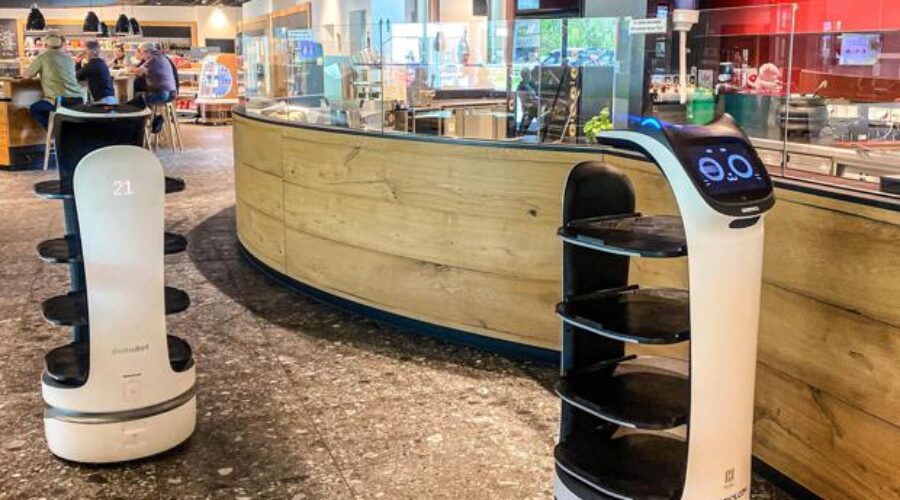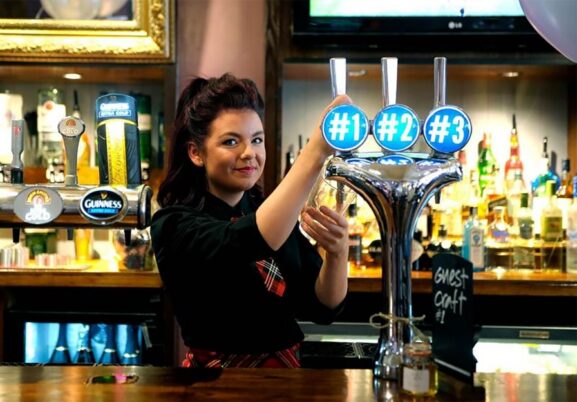Digital Helpers Increase Efficiency
Two practical examples of how AI tools and robotics can enhance efficiency in staffing and service.
At L’Osteria restaurants, intelligent algorithms help determine the best staffing for each shift based on reliable forecasts of revenue and workload. Meanwhile, the Thurau Group employs helpers that are always available and ready to work: service robots that deliver food from the kitchen to the table in their rest stops.
L’Osteria: Staff Planning with AI
The ideal staffing for each shift might sound like a dream, but L’Osteria restaurants are now getting quite close. The company uses the planning tool Nesto, which automatically creates the best possible shift plan.
To determine the optimal staffing for the restaurant, the algorithm first considers weather forecasts, seasonality, events, and the restaurant’s history. This allows it to predict expected revenue and workload. The AI then calculates so-called shift envelopes, ensuring that the restaurant is neither overstaffed nor understaffed, and that employees are more evenly utilized. The tool then fills these shift envelopes with the most suitable team members.
Relief for Management and Employees
Peter Schimpl, Vice President of Digital and IT at L’Osteria, explains that the AI also takes into account the employees’ contracts, working hours, preferences, certifications, and specializations. “The system significantly relieves management,” says Schimpl. The employees also benefit from the automated shift plans, as they can view their work schedules via the app and update their availability at any time. This leads to more satisfied teams, as their individual preferences can be better accommodated, according to Schimpl.
As with all its digital innovations, L’Osteria first tested the planning tool in pilot restaurants. Afterward, so-called seed restaurants—specially trained and educated—implemented the technology and served as points of contact for other restaurants during the onboarding process. Schimpl says, “With the seed concept, we can ensure a fast and comprehensive rollout process.”
Thurau Group Rest Stops: Robots in Service
Luna, Sarah, and Bella are the three new employees of the Thurau Group rest stops. Instead of being made of flesh and blood, they are made of plastic and data. The first service robot was introduced by the group in 2022 at the Rheintal rest stop near St. Gallen, soon joined by a second one. The third robot followed at the Thurau rest stop near Wil. Their main task is to bring food from the kitchen to the guests, thereby relieving the service staff, who still take care of serving.
“The concept was clear from the beginning,” says Peter Hofstetter, CEO of the group, whose rest stops operate at a restaurant level: “We want our employees to spend more time with the guests.” Therefore, the number of staff per shift (3 to 4 for around 200 seats) has not been reduced. Instead, the staff uses the extra time to make additional sales.
Attraction for Guests
Guests also enjoy the new team members. Many initially came just to see the robots in action. “I’ve never seen so many smartphones in my establishment,” says Hofstetter. The restaurant can now also better fulfill its service promise: that food will be on the table within seven minutes. The robots deliver immediately, relieving the staff of a significant stress factor.
The other five rest stops of the group in Switzerland and Austria will likely continue without robots, as they are not technically suitable. Thurau and Rheintal, however, were newly built a few years ago and designed specifically to meet the requirements of service robots: uniform floor height, electric doors, and one-way streets. “I was surprised at how easy the introduction was,” recalls Hofstetter.


